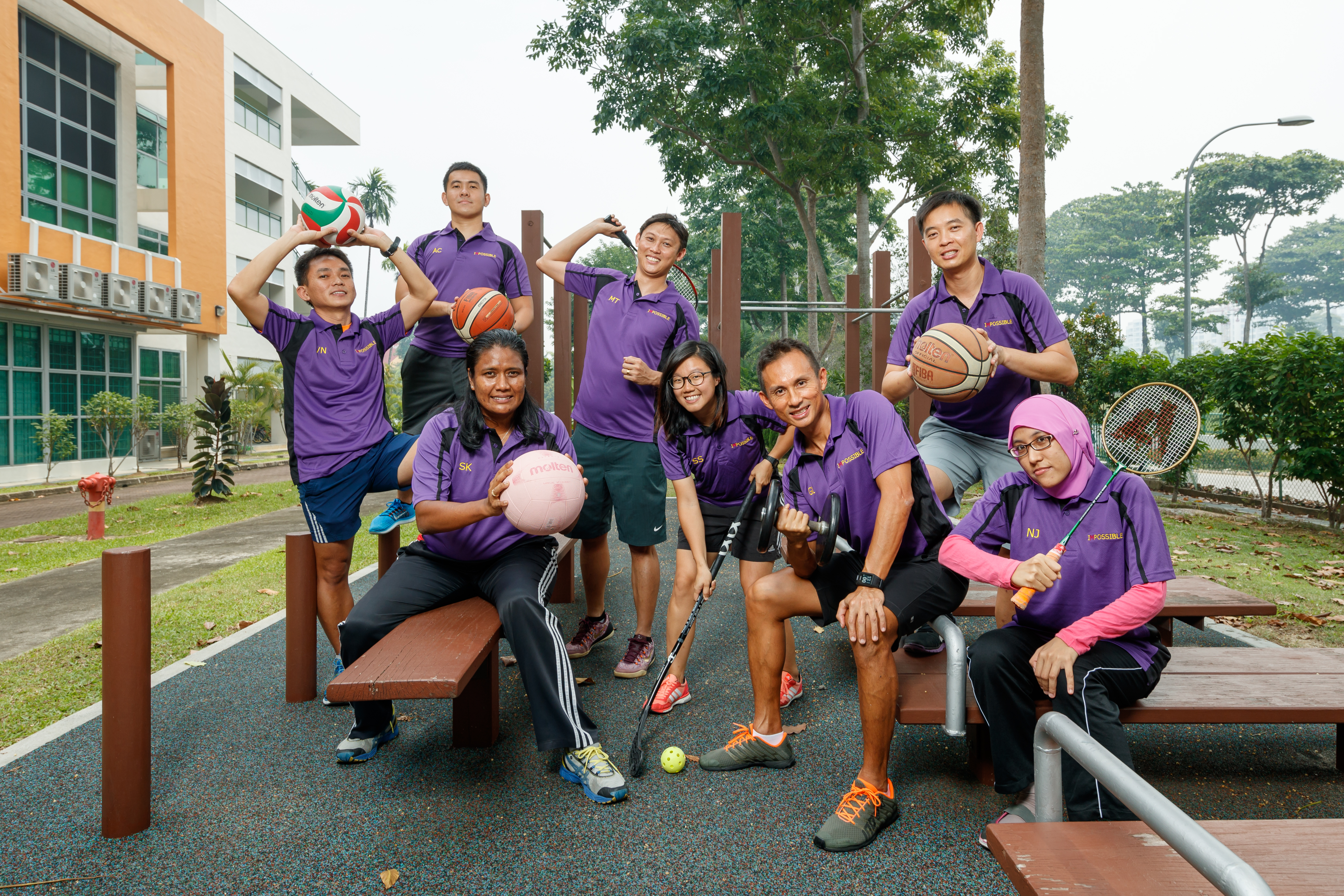Why Singapore’s English Teachers Should Embrace Singlish, Not Fight It
Is it time for Singaporean educators to embrace Singlish as a legitimate learning tool? What the Research […]
Read More
With a number of subjects to juggle, worksheets to complete, and exams to sit for, it is not uncommon for Singapore students to put their focus largely on academic learning in classes. But turning the pages is Bedok Green Secondary School who have extended students’ learning opportunities far beyond the four walls of the classroom.

Loh Kee Seng (standing, second from right) with Bedok Green Secondary School’s Physical Education department
For many young people in Singapore, growing up in an urban space provides them with little contact with the natural environment. However, Bedok Green Secondary School’s outdoor education programme, as part of the physical education syllabus, offers students just that through its variety of outdoor activities.
Whether it is knots and lashing, first aid or field cooking, the school’s outdoor programme mainly aims to develop students’ confidence in their physical abilities and emotional resilience to withstand challenging situations not just in school but also beyond. Students take on these experiential challenges that target the building of resilience, collaboration and leadership.
“Outdoor education is more than just sports and games,” Head of Physical Education Department Mr Loh Kee Seng says. “It offers students authentic learning experiences that they can then apply in their daily lives.”
The department’s outdoor education programme also includes an Abseiling Experience session for Secondary 1, an Outdoor Experiential Learning Camp for Secondary 2 and an Outdoor Adventure Race for Secondary 3 students. Leading up to the respective activities, the school first equips students with the necessary skills required to ace them.
For instance, the programme typically kicks off with orienteering (navigational skills using a map or compass) which includes star and line orienteering. Students can eventually utilize this skill during their Secondary 2 Outdoor Experiential Learning Camp, which involves plenty of map reading, albeit urban one.
“Outdoor education is more than just sports and games – it offers students authentic learning experiences that they can then apply in their daily lives.”
– Loh Kee Seng, Bedok Green Secondary School
Bedok Green Secondary have already made strides in their physical education programme with their introduction of journaling. Students are given time at the end of every lesson to pen down some of their reflections based on Borton’s Model of Reflective Practice (“what”, “so what” and “now what”).
“We have been moving towards this model of reflection over the past 2 years,” Kee Seng says. “We help students understand what they have learned, what they have failed to do, the value of the learning, and how they can apply it in their lives.”
Through journaling, the teachers learn more about and understand their students better – when they faced difficulties, why they were angry and why they were not engaged. Understanding these aspects allow the teachers to improve their lessons and activities.
“We will continue this journey of journaling because when you better understand its value, you will see that that the reflection is more important that the activity itself,” explains Kee Seng. “A lot of the learning takes place in the reflection.”
Now in its 4th year running, the journal has since evolved and become a staple in the curricula. From when it first started out as part of just the outdoor education lessons, it has now organically grown to encompass all aspects of physical education in the school. It has also become a whole-school approach where teachers attend workshops to help them be confident and effective facilitators during the reflection sessions.
However, it was not overnight that Bedok Green Secondary’s Outdoor Education programme came to be where it is today. It took a lot of patience, trial and error, hard work, and determination.
“The authentic learning experience gives room for students to make mistakes without fear – this is something that typical academic lessons don’t usually offer.”
– Kee Seng, on how outdoor activities can provide students with many learning opportunities
Resistance from the students was anticipated especially when the programme was first introduced and in its developing stages.
“Outdoor education is not plug-and-play in which students will instantly accept. We learned this the hard way and had to work on getting the students’ buy-in,” says Kee Seng.
He notes that with different group of students come with different levels of resistance. However, Kee Seng also noticed that through the school’s introduction of Outdoor Adventure Club (ODAC) as a CCA, it has become evident that there are students who will always take the initiative to motivate and guide their less enthusiastic classmates in class to be interested in outdoor adventures.
“Usually, their peers help a lot in getting their buy-in,” Kee Seng shares. “So sometimes you don’t talk to them directly. Instead, you talk to their friends because once the peers get on board the idea, the rest tend to follow suit.”
Through the challenge of convincing students on the benefits of outdoor education, Kee Seng has learnt that plenty of preparation and planning on the teachers’ part are required for it to be successful. As he puts it, “In outdoor education, if you fail to plan, you plan to fail.” For Bedok Green Secondary, their success in outdoor education is definitely a story to tell today and the many years to come.